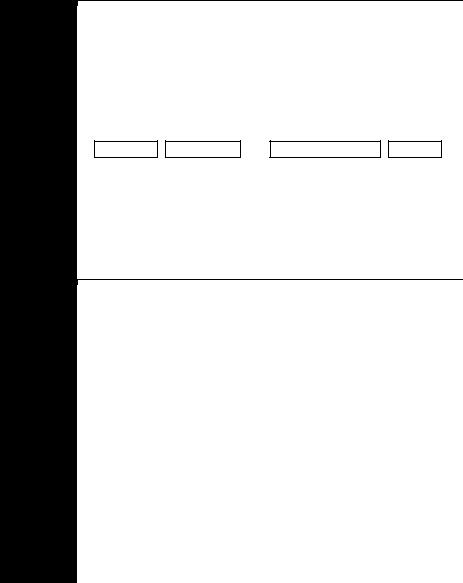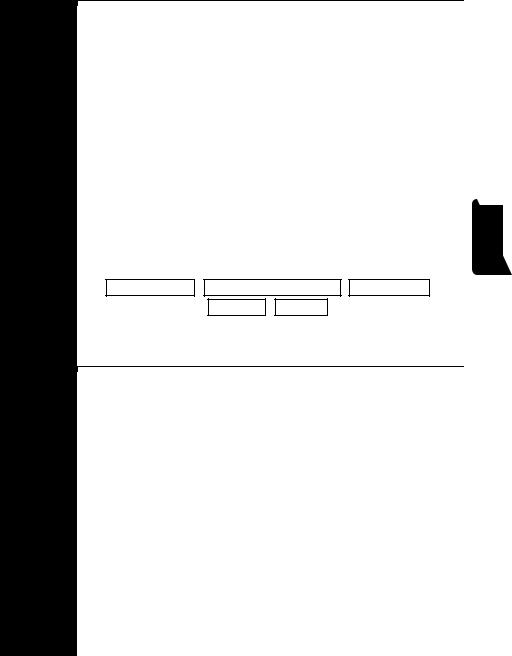
LAW / Referencing for Law Students / AGLC 3rd ed
.pdf
180 Part IV — International Materials
Examples
Notes
Pinpoint references should adhere to rule 12.1.2. However, where a document does not have paragraph numbers, pinpoint references should be to page numbers. There should be no punctuation between the full date and the pinpoint. However, where a citation to GATT BISD is included, a comma should precede the pinpoint reference.
Communication from the Republic of the Philippines — Revised Conditional Offer by the Philippines on Initial Commitments on Trade in Services, GATT Doc MTN.GNS/W/131/Rev.1/Corr.1 (16 October 1992) (Corrigendum).
Agreement on Trade in Civil Aircraft — Status of Acceptances on 1 July 1980, GATT Doc AIR/12 (2 July 1980) (Note by the Secretariat) 2–3.
Waiver in Respect of the Trust Territory of the Pacific Islands (8 September 1948) (Decision) GATT BISD II/9, para 2.
Report on the 1993 Consultation with the Republic of South Africa, GATT Doc BOP/R/211 (30 July 1993) [5].
European Communities — Transitional Measures to Take Account of the External Economic Impact of German Unification, GATT Doc L/6792 (13 December 1990) (Decision) GATT BISD 37S/296. [Not: … L/6792 (Decision of 13 December 1990) …]
Some early GATT documents do not have a GATT document number. Where possible, such documents should be cited in GATT BISD.
GATT BISD was first published in volumes I to IV. A revised volume of GATT BISD I (denoted ‘IR’) was also published. In 1952, the first Supplement (GATT BISD 1S) was published, and publication of GATT documents continued in the Supplements.
12.2.2GATT Panel Reports
Rule GATT Panel reports should be cited in the same manner as WTO panel reports (in accordance with rule 12.1.3). However, GATT BISD references should appear instead of DSR references where available (and should adhere to rule 12.2.1).

Australian Guide to Legal Citation 181
In accordance with rule 12.1.3, even where a GATT BISD reference is included, pinpoint references should be to paragraph numbers, which should appear in square brackets.
Examples GATT Panel Report, United States — Taxes on Petroleum and Certain Imported Substances, GATT Doc L/6175 (5 June 1987, adopted 17 June 1987) GATT BISD 34S/136, [4.1.1]–[4.1.4].
GATT Panel Report, EEC — German Exchange Rate Scheme for Deutsche Airbus, GATT Doc SCM/142 (4 March 1992, unadopted) [5.9].
12.3Investment and Trade Treaties and Investor–State Arbitrations
Econ Int
Materials
|
|
Rule |
|
Investment and trade treaties (such as bilateral investment treaties and |
|
|
|
|
free trade agreements) should be cited in accordance with chapter 7. |
|
|
|
|
Investor–state arbitrations should be cited in accordance with |
|
|
|
|
chapter 10. |
|
|
|
|
|
|
|
Examples |
|
North American Free Trade Agreement, signed 17 December 1992, |
|
|
|
|
[1994] CTS 2 (entered into force 1 January 1994) art 2005. |
|
|
|
|
United Parcel Service of America Inc v Canada (Merits) (North |
|
|
|
|
American Free Trade Agreement Chapter 11 Arbitral Tribunal, 24 |
|
|
|
|
May 2007) [119]–[120]. |
|
|
|
|
|
12.4Subsequent References
Rule ‘Ibid’ should be used for all materials in this chapter (in accordance with rule 1.4.1).
Other subsequent references to treaties should adhere to rule 7.6.

182 Part IV — International Materials
Other subsequent references to WTO and GATT documents should appear in full each time a source is referred to. However, where a WTO or GATT document is referred to frequently, it may be given a short title. The short title should adhere to rule 1.4.3 (so should be italicised and placed within single inverted commas and parentheses following the initial citation). Subsequent references should then take the form:
Short Title , WTO/GATT Doc Document Number , Pinpoint .
For subsequent references to WTO panel reports, Appellate Body reports or decisions by the arbitrator or GATT panel reports, the document description (the name of the reporting body) should be included before the short title, followed by a comma. The short title should be that commonly used for the report, unless there is good reason to do otherwise.
Examples 13 Ministerial Declaration on Trade in Information Technology Products, WTO Doc WT/MIN(96)/16 (13 December 1996) (‘Information Technology Agreement’).
…
17Information Technology Agreement, WTO Doc WT/MIN(96)/16, para 2.
18Appellate Body Report, United States — Measures Relating to Zeroing and Sunset Reviews — Recourse to Article 21.5 of the DSU by Japan, WTO Doc WT/DS322/AB/RW, AB-2009-2 (18 August 2009, adopted 31 August 2009) (‘US — Zeroing (Article 21.5 — Japan)’).
19Ibid [160].
…
22Appellate Body Report, US — Zeroing (Article 21.5 — Japan), WTO Doc WT/DS322/AB/RW, [162].

183
13 European Supranational Materials
13.1European Union Materials
13.1.1Official Journal of the European Union
|
|
|
|
Council |
|
|
|
|
|
|
|
|
|
|
Directive |
|
|
|
|
|
|
|
|
|
|
93/13/EEC of 5 |
|
|
|
|
|
|
|
|
Example |
|
April 1993 on |
[1993] |
OJ |
L |
95 |
/29 |
, art 3(1) |
|
|
|
|
Unfair Terms in |
|
|
|
|
|
|
|
|
|
|
Consumer |
|
|
|
|
|
|
|
|
|
|
Contracts |
|
|
|
|
|
|
|
|
|
|
|
|
|
|
|
|
|
|
|
Element |
|
Document Title |
Year |
Official |
Series |
Issue |
Starting |
Pinpoint |
|
|
|
Journal |
Number |
Page |
|||||
|
|
|
|
|
|
|
|
|
|
|
Rule A reference to a document of the European Union (‘EU’), European Communities (‘EC’) or predecessor organisations should include a citation to Official Journal of the European Union (abbreviated ‘OJ’) where possible.
The document title should appear in italics and as it does on the document cited, subject to chapter 1. In particular:
•punctuation should adhere to rule 1.6.1 (so full stops should not be used in abbreviations); and
•capitalisation should adhere to rule 1.7.
The year is that of publication in the OJ.
For documents published from 1 January 1968, the series should be included after ‘OJ’, preceded by a space. Legislative acts are contained in the ‘L’ series (abbreviated ‘OJ L’), and information and notices are contained in the ‘C’ series (abbreviated ‘OJ C’).
The issue number and starting page should be separated by an (unspaced) slash (for example, ‘22/34’).
European
Materials

184 Part IV — International Materials
Part of the C series is published only in electronic format. References to documents in this part of the C series should appear as follows:
Document Title [ Year ] OJ C Issue Number E/ Starting Page ,
Pinpoint .
For documents published before 1 January 1974, a parallel citation to the English language Special Edition of the Official Journal (‘OJ Spec Ed’), preceded by a semi-colon, should be included (where possible). It should appear in the form:
Year OJ Spec Ed Starting Page
Pinpoint references should adhere to rules 1.1.5–1.1.6 and be preceded by a comma. Pinpoints may be to pages, paragraphs, articles or other internal divisions of the relevant document. Abbreviations in pinpoints should adhere to rule 3.1.4.
Examples Commission Decision of 18 December 2002 Relating to National Provisions on Limiting the Importation and Placement on the Market of Certain NK Fertilisers of High Nitrogen Content and Containing Chlorine Notified by France Pursuant to Article 95(5) of the EC Treaty [2003] OJ L 1/72, 79.
Notice for the Attention of Ghuma Abd’rabbah concerning His Inclusion in the List Referred to in Articles 2, 3 and 7 of Council Regulation (EC) No 881/2002 Imposing Certain Specific Restrictive Measures Directed against Certain Persons and Entities Associated with Usama bin Laden, the Al-Qaida Network and the Taliban [2009] OJ C 230/29, paras 3(a), 4, 6.
Regulation (EC) No 2037/2000 of the European Parliament and of the Council of 29 June 2000 on Substances That Deplete the Ozone Layer
[2000] OJ L 244/1, art 3(1).
European Parliament — 2008–2009 Session — Sittings of 20 to 23 October 2008 — Strasbourg — Minutes — Proceedings of the Sitting
[2009] OJ C 3 E/1.
Regulation (EEC) No 2005/70 of the Commission of 6 October 1970 on the Classification of Vine Varieties [1970] OJ L 224/1; [1970] OJ Spec Ed 623, art 2(1), annex.

Australian Guide to Legal Citation 185
Notes The Official Journal of the European Communities became the Official Journal of the European Union on 1 February 2003. Both, as well as previous equivalent publications, are abbreviated ‘OJ’.
Within the EU, legislative acts include regulations, directives and decisions of the various organs (other than EU courts).
The OJ Spec Ed is a non-binding official translation of some documents published in the OJ into the languages of non-member states or states to whom the document does not apply. From 1 January 1974, the official OJ was published in English, obviating the need to refer to the Spec Ed from this date.
Until 30 June 1967, the pagination of the OJ was continuous. Thus, an issue number is not necessary to identify documents up to this date.
13.1.2Constitutive Treaties of the European Union
Rule The constitutive treaties of the EU and EC (and predecessor organisations) should be cited as treaties in accordance with chapter 7. However:
•a reference to the OJ (where available) should replace a reference to the UNTS or an official national treaty series; and
•a short title or amendment information must be included in accordance with this rule.
When referring to constitutive treaties of the EU and EC as in force (that is, as amended and renumbered from time to time):
•a citation to the latest consolidation of the treaty in the OJ should be included (if available); and
•the ‘short title for current references’ in the table below should be included in the first citation and used for subsequent references (in accordance with rule 7.6).
European
Materials

186 Part IV — International Materials
When referring to constitutive treaties of the EU and EC as made (prior to any amendment):
•a citation to the UNTS or the OJ containing the treaty as made should be included; and
•the ‘short title for historical references’ should be included in the first citation and used for subsequent references (in accordance with rule 7.6).
|
Treaty |
|
|
Short Title |
|
Short Title for |
|
|
|
|
for Current |
|
Historical |
|
|
|
|
References |
|
References |
|
|
|
|
|
|
|
|
Treaty on European Union |
|
EU |
|
Treaty on |
|
|
|
|
|
|
|
European Union |
|
|
|
|
|
|
|
|
Treaty on the Functioning of the |
|
FEU |
|
Treaty on the |
|
|
European Union |
|
|
|
Functioning of |
|
|
|
|
|
|
|
the European |
|
|
|
|
|
|
Union |
|
|
|
|
|
|
|
|
Treaty Establishing the European |
|
EC |
|
EC Treaty |
|
|
Community |
|
|
|
|
|
|
|
|
|
|
|
|
|
Treaty Establishing the European |
|
EA |
|
EAEC Treaty |
|
|
Atomic Energy Community |
|
|
|
|
|
|
|
|
|
|
|
|
|
Treaty Instituting the European Coal |
|
CS |
|
ECSC Treaty |
|
|
and Steel Community |
|
|
|
|
|
|
|
|
|
|
|
|
Where the fact of amendment is important, or when referring to a foundational EU treaty after amendment by a specific intermediate amending treaty, amendment information may be included (in accordance with rule 3.8) in the form:
Citation to Foundational EU Treaty , as amended by
Citation to Amending Treaty .
The dates of opening for signature and entry into force for all foundational EU treaties should adhere to rule 7.3 (so should be those of the treaty as made), regardless of whether the treaty is referred to as in force or historically.

Australian Guide to Legal Citation 187
Examples Treaty on European Union, opened for signature 7 February 1992, [2009] OJ C 115/13 (entered into force 1 November 1993) (‘EU’). [cited as amended]
Treaty on the Functioning of the European Union, opened for signature 7 February 1992, [2009] OJ C 115/199 (entered into force 1 November 1993) (‘FEU’). [cited as amended]
Treaty Establishing the European Atomic Energy Community, opened for signature 25 March 1957, 298 UNTS 167 (entered into force 1 January 1958) (‘EA’). [cited as amended]
Treaty on European Union, opened for signature 7 February 1992, [1992] OJ C 191/1 (entered into force 1 November 1993) (‘Treaty on European Union’). [cited historically]
Treaty Establishing the European Community, opened for signature 7 February 1992, [1992] OJ C 224/6 (entered into force 1 November 1993) (‘EC Treaty’). [cited historically]
Treaty Establishing the European Economic Community, opened for signature 25 March 1957, 298 UNTS 11 (entered into force 1 January 1958) (‘EEC Treaty’).
Treaty Instituting the European Coal and Steel Community, signed 18 April 1951, 261 UNTS 140 (entered into force 23 July 1952, expired 23 July 2002) (‘ECSC Treaty’). [cited historically]
Treaty on European Union, opened for signature 7 February 1992, [1992] OJ C 191/1 (entered into force 1 November 1993), as amended by Treaty of Amsterdam Amending the Treaty on European Union, the Treaties Establishing the European Communities and Certain Related Acts, opened for signature 2 October 1997, [1997] OJ C 340/1 (entered into force 1 May 1999).
Treaty Establishing the European Community, opened for signature 7 February 1992, [1992] OJ C 224/6 (entered into force 1 November 1993), as amended by Treaty of Nice Amending the Treaty on European Union, the Treaties Establishing the European Communities and Certain Related Acts, opened for signature 26 February 2001, [2001] OJ C 80/1 (entered into force 1 February 2003).
European
Materials

188 Part IV — International Materials
Notes
Treaty on European Union, opened for signature 7 February 1992, [1992] OJ C 191/1 (entered into force 1 November 1993) art 2, as amended by Treaty of Lisbon Amending the Treaty on European Union and the Treaty Establishing the European Community, opened for signature 13 December 2007, [2007] OJ C 306/1 (entered into force 1 December 2009) art 1(4).
The system of short titles used in this rule is adapted from that used by the European Court of Justice, due to the amendment and renumbering of the provisions in the various constitutive EU treaties. The Treaty of Amsterdam (with effect from 1 May 1999) renumbered several provisions of the Treaty on European Union and the EC Treaty. The Treaty of Nice (with effect from 1 February 2003) inserted several new provisions into both treaties. The Treaty of Lisbon (with effect from 1 December 2009) recast the EC Treaty as the Treaty on the Functioning of the European Union and substantially amended and renumbered the Treaty on European Union.
The ECSC Treaty is commonly known as the ‘Treaty of Paris’. The
EEC Treaty is commonly known as the ‘Treaty of Rome’. The Treaty on European Union is commonly known as the ‘Treaty of Maastricht’.
13.1.3Courts of the European Union
|
|
|
Costa v ENEL |
(C-6/64) |
[1964] |
ECR |
585 |
, 594 |
|
|
Examples |
|
|
|
|
|
|
|
|
Vainker v European |
(T-48/01) |
[2004] |
ECR-SC |
II-197 |
, II-207 |
|
|
|
|
Parliament |
|||||
|
|
|
|
|
|
|
|
|
|
|
|
|
|
|
|
|
|
|
|
Element |
Parties’ Names |
Case |
Year |
Report |
Starting |
Pinpoint |
|
|
|
|
Number |
|
Series |
Page |
|
|
|
|
|
|
|
|
|
|
Rule Reported decisions of the Court of Justice of the European Union (‘ECJ’), the General Court of the European Communities (‘General Court’) and the European Union Civil Service Tribunal should be cited as shown above.
The parties’ names, including those of EU organs, should be included as they appear on the first page of the report, subject to chapter 1. They should be italicised and separated by ‘v’.

Australian Guide to Legal Citation 189
The case number (including the prefixes ‘C-’ for cases decided by the ECJ, ‘T-’ for cases decided by the General Court, and ‘F-’ for cases decided by the European Union Civil Service Tribunal) should be included after the parties’ names in parentheses. It should not be italicised.
Pinpoint references should adhere to rule 9.2.7. However, the starting page and page pinpoint references for decisions in the ECR since 1990 should include the prefix ‘I-’ (for decisions of the ECJ) and ‘II-’ (for decisions of the General Court). Page references to judgments in the ECR-SC should include the prefix ‘II-’. Spans of page numbers should adhere to rule 1.12. The prefixes ‘I-’ or ‘II-’ should not be repeated in the second number of a page span.
Decisions not reported in the ECR or ECR-SC should be cited as follows:
Parties’ Names ( Name of Court/Tribunal , Case Number ,
Full Date ) Pinpoint .
The name of the court should be included as it appears on the decision. Pinpoint references should be to paragraphs.
Examples Grad v Finanzamt Traunstein (C-9/70) [1970] ECR 825, 833.
Ireland v Council of the European Communities (C-151/73) [1974] ECR 285, 298 [21]–[23].
Germany v Commission of the European Communities (C-301/96) [2003] ECR I-9919, I-9949–51. [Not: … I-9919, I-9949–I-9951.]
O’Casey v Commission of the European Communities (T-184/94) [1998] ECR-SC II-565, II-577–8 [52]–[54].
Commission of the European Communities v Luxembourg (Court of Justice of the European Communities, C-34/07, 29 November 2007) [14]–[15].
Clearwire Corp v Office for Harmonisation in the Internal Market
(Court of First Instance of the European Communities, T-399/08, 19 November 2009).
European
Materials
